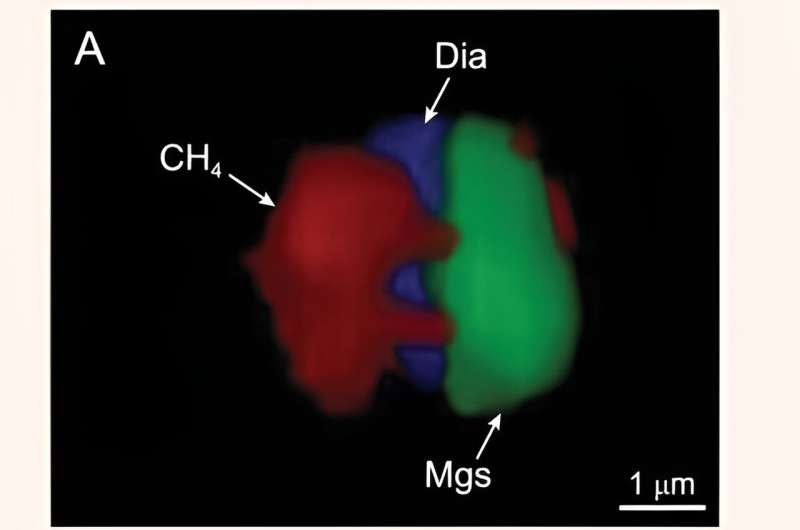This article has been reviewed according to Science X's editorial process and policies. Editors have highlighted the following attributes while ensuring the content's credibility:
fact-checked
trusted source
proofread
Coexisting carbon-bearing inclusions found in deep mantle wedge peridotite

A research team led by Prof. Xiao Yilin from the University of Science and Technology of China (USTC) of the Chinese Academy of Sciences (CAS) discovered the first diamond-magnesite-methane coexisting multiphase carbon-bearing inclusions in deep mantle wedge peridotite in subduction zone by using 3D Raman imaging analysis technique. The results were published in the National Science Review.
Shell-sourced carbon enters the mantle through subduction, during which carbon-bearing melt/fluids are released from the subducting plate and transported upward into the mantle. Most of the carbon is exported into the atmosphere through island arc volcanism in the forms such as carbon dioxide and hydrocarbons, but a certain amount of carbon remains transported and stored in the mantle in the form of ultrahigh-pressure minerals (e.g., diamond, magnesite). The identification of carbon stored in the mantle is of great significance for understanding the deep carbon cycle and carbon transport processes.
In this study, the researchers chose a typical mantle wedge peridotite from an ultrahigh-pressure metamorphic zone (Dabie orogenic belt), and carried out detailed petrographic and inclusions composition studies.
They found that the inclusions in olivine and zircon are primary inclusions which represent the chemical composition of carbon-bearing melt/fluid in the deep-accounted mantle wedge of the subduction zone. Raman analyses showed that the ultrahigh-pressure indicator mineral diamond was captured in both olivine and zircon, and coexisting multiphase carbon-bearing inclusions (diamond-magnesite-methane) were identified in olivine by three-dimensional imaging.
The presence of carbonate inclusions in garnet lenses captured in peridotite bodies suggested that CO32- may be the dominant carbon-bearing phase in subduction zone CHO fluids. During subduction of the slab, rhodochrosite reacted with H2O to form multiphase inclusions (magnesite + CH4 + diamond). Carbon released from subducting plates can be stored in the overlying mantle wedge as diamond + methane + magnesite. Oxidized carbonates were converted to CH4, magnesite and refractory diamond when the slab subducted to sub-arc depths, realizing the deep carbon cycle process.
This study has important implications for a deeper understanding of carbon cycling at the depth under subduction zone arcs, especially within reducing environments.
More information: Xiaoxia Wang et al, Deep carbon cycling during subduction revealed by coexisting diamond-methane-magnesite in peridotite, National Science Review (2023). DOI: 10.1093/nsr/nwad203
Provided by Chinese Academy of Sciences





















